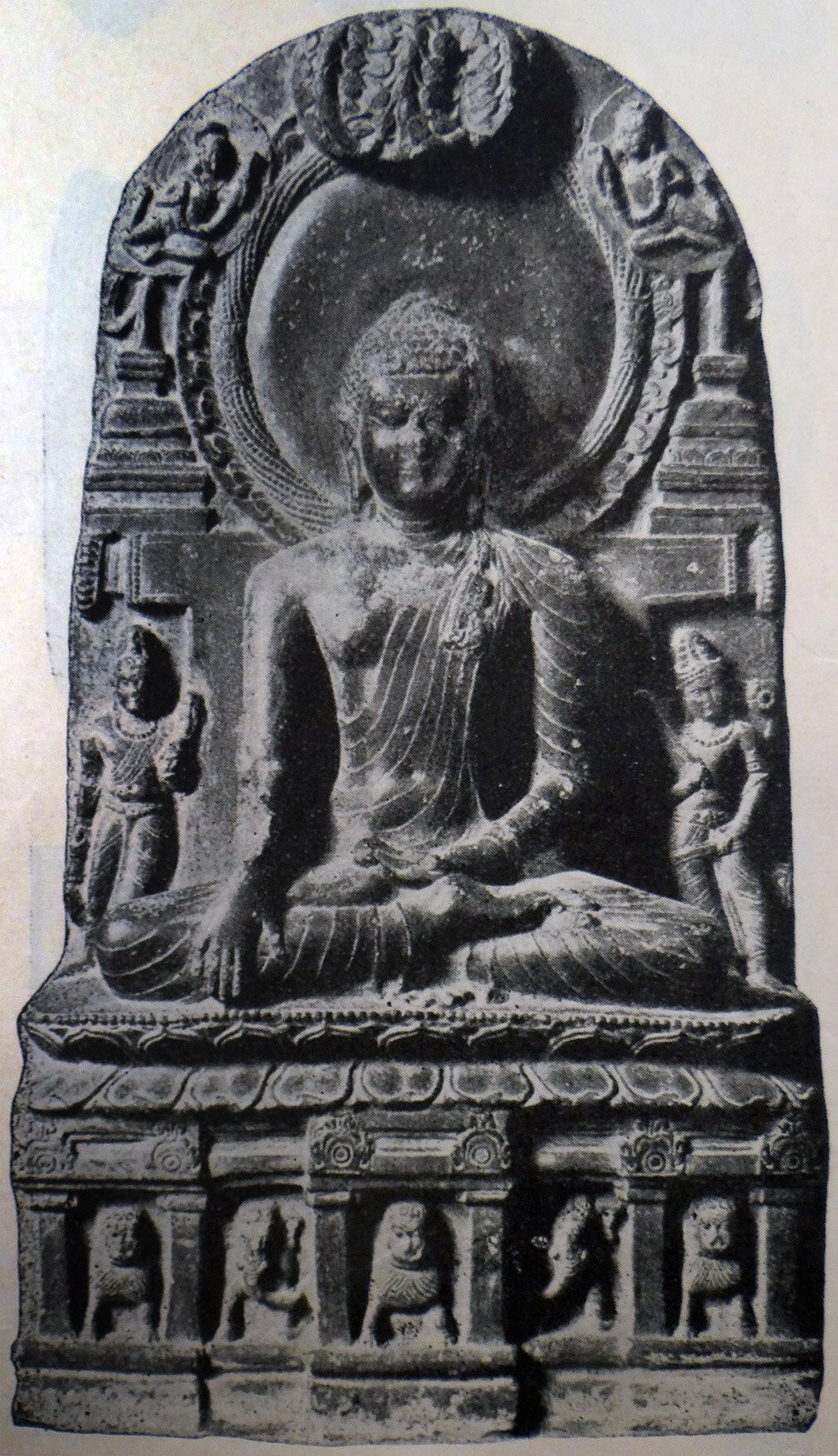The Indian Buddhist Iconography
by Benoytosh Bhattachacharyya | 1958 | 51,392 words | ISBN-10: 8173053138 | ISBN-13: 9788173053139
This page contains an iconography image of Buddha Vajrasana and represents figure 46 of the book Indian Buddhist Iconography, based on extracts of the Sadhanamala English translation. These plates and illustrations represent either photographs of sculptures or line-drawing reproductions of paintings or other representations of Buddhist artwork.
Figure 46 - Buddha Vajrāsana

Figure 46: Vajrāsana (Indian museum)
The Sādhanamālā furnishes us with several descriptions of Buddha Vajrāsana sitting in the Vajraparyaṅka attitude, with his right hand displaying the Bhūmisparśa pose.
“The worshipper should meditate himself as (Vajrāsana) who displays the Bhūsparśa Mudrā in his right hand while the left rests on the lap. He is dressed in red garments and sits on the Vajra-marked double lotus placed on the four Māras of blue, white, red and green colour. He is peaceful in appearance and his body is endowed with all the major and minor auspicious marks.
“To the right of the God is Maitreya Bodhisattva who is white, two-armed, and wears the Jaṭāmukuṭa (crown of matted hair), and carries the chowrie-Jewel in the right hand, and the Nāgakeśara flower in the left.
“Similarly, to the left of the principal God is Lokeśvara of white complexion, carrying in his right hand the chowrie and the lotus in the left.
“These two gods should be meditated upon as looking towards the face of the (principal) god......
“Here ends the Sādhana for Vajrāsana”
Images of this divinity are found in overwhelming numbers in almost all Buddhist centres in India. The Indian Museum image (Fig. 46) is an example of this form of Gautama.
